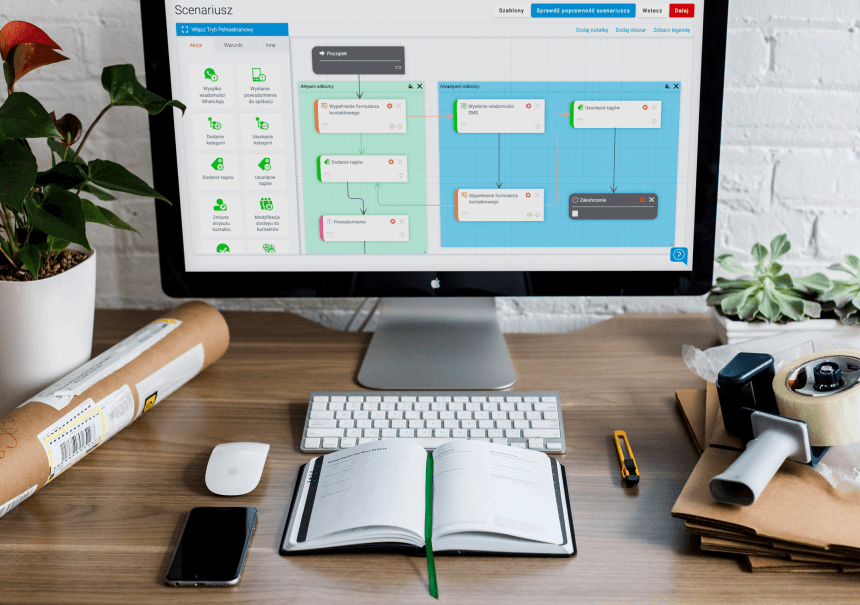Key performance indicators (KPI) in marketing

KPIs are indicators to measure the effectiveness of marketing activities. They determine whether the implemented activities are achieving their goals. KPIs are essential for any marketing team that wants to monitor and optimize its activities (and, most importantly, see if they make sense and pay off).
What is a KPI?
It stands for the phrase Key Performance Indicators. In practice, these are metrics that help check the progress and progress of current strategic marketing activities. However, the definition of KPIs is quite broad and applies to different types of marketing, such as:
A. Online marketing, i.e., for example, conversion rate, lead acquisition cost, website traffic
B. Internal marketing, i.e., for example, the degree of involvement of the staff in a particular project or a customer satisfaction survey.
C. Traditional marketing, i.e., for example, the degree of outreach to customers, their brand awareness or outright sales performance.
Choosing the right KPI depends on the marketing goals you want to achieve.
KPIs should be specific, that is, they should clearly define what exactly you want to measure.
They should also be simple to measure, based on reliable data (which can be quickly verified), collected regularly to determine progress at any time.
Don’t forget that KPIs should be correlated with your organization’s specific business goals. Such correlation will help you understand whether you are getting closer to achieving the set goal, or whether you need to change something in your strategy to adapt it to new circumstances.
Finally, KPIs should relate to a certain period of time. They can be daily, monthly, quarterly or annual, depending on the complexity of the goal and your company’s needs. Nevertheless, at some point the KPIs should be ‘closed’ so that you can evaluate all the processes taking place and analyze the strategy in retrospect.
Why use KPIs?
Because for a marketer, KPI has a lot of advantages. With KPIs, you will define your marketing goals, or in other words, answer for yourself what you actually want to achieve through your activities.
Indicators are a way to quickly check (numbers don’t lie) whether what you’re doing – e.g. marketing campaigns – are indeed heading in the right direction. At the same time, using KPIs (again: numbers don’t lie) you will identify possible areas where things are going wrong. There is then time to improve, to improve some process. That’s why it’s a good idea to analyze KPI values frequently: sudden drops will be the first alarm signal.
KPIs are also a kind of guideline for the future. No marketing strategy lasts forever. When designing the assumptions of a new strategy, it is worth going back to the results of previous campaigns, analyzing the actions taken and confronting them with the results achieved. It’s best to learn from mistakes – the chances increase that you won’t make them in the new marketing strategy.
Marketing must-have KPIs
You know your company’s profile, situation and plans best. There is no doubt that you are best suited to choose the right KPIs for you. However, we will outline the metrics that work for most marketing teams.
CTR – the ratio of the number of clicks on a link / ad to the number of impressions of the same. CTR is always expressed as a percentage. A high CTR indicates that you have managed to make a cool, engaging ad that people want to click on.
As a side note: a cool and engaging ad consists not only of graphics (although it is crucial), but also the product itself, the place of display, budgets and properly selected keywords.
CPL – the cost of acquiring a lead, i.e. a potential customer. Tip: break this KPI down into separate marketing channels to find where it’s cheapest to acquire a lead. Target the heaviest guns of your marketing campaigns there.
LTV – information on how much your company will earn from a specific customer (hence Lifetime Value). This is an interesting KPI because it will isolate your most valuable customers. Using Marketing Automation, you can pull additional data about them and find out which group of your service recipients is the most promising – and which group is worth “investing” in.
KPIs vs. Marketing Automation
Marketing automation is closely related to KPIs – if only because automating many of the day-to-day promotional tasks (e.g., sending e-mails, creating ad campaigns, managing customer relationships) saves professionals valuable time and allows them to focus on more strategic tasks, such as analyzing data and planning future marketing activities.
Marketing Automation will make it easier to collect data and track specific KPIs. Marketing automation tools can collect data on e-mail opens, link clicks and conversions – and you’ll use this information to track the effectiveness of your marketing campaigns, and even more importantly, to find areas where you can improve those campaigns.
Want to see how to use iPresso for marketing automation and KPI research? Fill out the short form – we’ll get in touch with you to discuss how we can help you.



